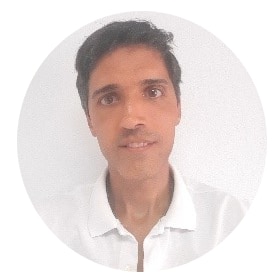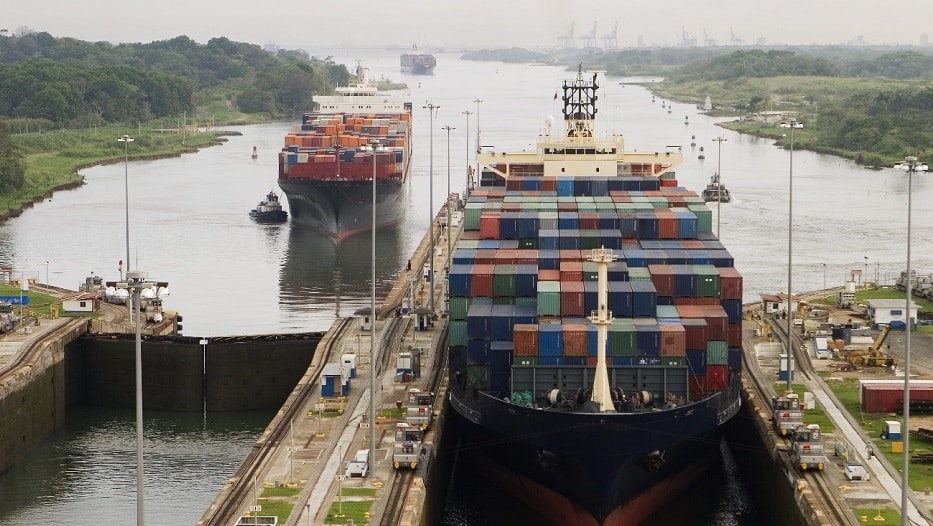Julia Maria Gomez de Avila Segade | 24/01/2023
To prevent risks at ports, it is necessary to analyze the geotechnical characteristics of the environment. We are familiar with the development of surveillance systems in this field, maintenance solutions for these essential infrastructures of international trade.
As stated by the World Trade Organization (WTO), maritime transportation is often considered the “lifeblood of trade”, as it is the predominant mode of international logistics and the backbone of supply chains, accounting for over 80% of global transactions. In this context, ports are therefore strategic points of global economic development.
Their safety is linked to the volume of their activity and the design of their infrastructures, but there is one aspect on which they depend that is not too well known: the geotechnical characteristics of the environment. This is how Jesús González Galindo, Associate Professor at the Polytechnic University of Madrid (UPM [Universidad Politécnica de Madrid]), a specialist in geotechnics and with extensive experience in maritime infrastructures, explains it to us. “The geotechnics of port works is very important for several reasons. Firstly, because it is necessary to build structures (such as docks or dikes) whose foundations must be designed, so it is necessary to study the terrain. And, on the other hand, dredging —excavations below the water level— will also be carried out, and it is necessary to study their feasibility”, explains the expert.
Another action directly related to geotechnics is port backfilling —most of the time carried out with material from dredging—, which is performed so that the port gains surface area to the sea and can thus accommodate all the infrastructures it needs.
“The safety is undeniable. In the years I’ve been working on these types of sites, incidents have been very rare, and usually in the construction process”
Processes and results
As a starting point for the development of these port evaluation techniques, we could talk about the year 1994, when the institution of Puertos del Estado created the Geotechnical Recommendations for Maritime and Port Works (ROM 0.5-94) in a document that was updated in 2005 (ROM 0.5-05) and that, in the next few years, will possibly be adapted to the Eurocode. This document divides the concept of safety into three parts:
- Reliability (understood as resistance to severe failures)
- Functionality (response to possible structural, aesthetic, or environmental alterations)
- Operationality (guarantee of the use of the work)
The analysis of the terrain is sometimes complicated. González Galindo tells us, for example, about the surveys and tests carried out from the sea to characterize the area. This process increases resource costs and lengthens lead times. On the other hand, in maritime works “a series of pressures are generated that we have to study: interstitial presences, soil behavior, drainage etc., it is a complicated issue, especially in shelter works,” alluding to the effect of the action of waves on these structures that are built offshore to protect the coasts through the construction of dikes.
These structures are also those that require more extensive maintenance, as they are subjected to sea waves, which may cause their gradual deterioration. “Small movements in these elements cause damage that must be repaired on a regular basis, sometimes because they break and sometimes because they have been displaced, therefore, it is necessary to recover their initial geometry”, says the UPM professor. This symmetry is also sought in uncompacted port backfilling. The improvement in the monitoring of these areas has been made, according to the expert, in two directions: the regularity of the examinations and the improvement of the machinery.
Although the natural protection elements of the dikes are studied in the construction processes, prefabricated elements are also used, although in this sense there has not been a significant evolution in recent years. “There are higher-strength concretes, but generally they only generate small variations in the construction process,” adds González Galindo.
The importance of this commitment to environmental disruption is not simply a matter of social responsibility
Industry challenges
The geotechnical care of the port works has the clear objective of maintaining its competitiveness and creating a more efficient work operation while maintaining safety in accordance with the geographical situation of the area. “The safety is undeniable. In the years I’ve been working on these types of sites, incidents have been very rare, and usually in the construction process. The finished site does need maintenance work, but failures that put the infrastructure out of service do not usually occur,” says the researcher. That is why the previous analysis of the terrain is fundamental in the subsequent course of the project.
Efforts are also being made to innovate in the mechanisms for estimating the acting waves, as well as in the construction processes. “Most significant is the progress with dikes on slopes, the technological evolution in cranes for the placement of increasingly larger blocks, as well as the predictive techniques of maritime climate to prevent accidents during the execution of the works (Langosteira dike); in vertical dikes, the new prediction systems also stand out, in this case to achieve the anchoring of caissons in open sea (Gijón port extension dike)”, explains the expert.
Another clear objective is the reduction of the environmental impact, although this process involves not only those involved in the construction, but also the port authorities and the companies that perform their activities at these facilities. González Galindo alludes in this regard to the unstoppable trend towards the electrification of docks for their use by moored ships, as can be seen in the ports of Valencia and Barcelona, still in the project phase. The importance of this commitment to environmental disruption is not simply a matter of social responsibility, but also affects the safety of existing and future infrastructures. “The projects already include a climate change appendix, which translates into an increase in mean sea level, leading to an increase in the height of dock walls, breakwater crowns, and service networks”, he concludes.
Contributor to this article…
 Jesús González Galindo holds a PhD in Civil Engineering from the UPM. Associate Professor in the Department of Engineering and Terrain Morphology at the Higher Technical School of Industrial Engineering. Professor of the Master’s Degree in Excavations and Underground Works and the Master’s Degree in Dam Operation and Safety.
Jesús González Galindo holds a PhD in Civil Engineering from the UPM. Associate Professor in the Department of Engineering and Terrain Morphology at the Higher Technical School of Industrial Engineering. Professor of the Master’s Degree in Excavations and Underground Works and the Master’s Degree in Dam Operation and Safety.
He has co-authored four doctoral theses, researched in the study of gravity foundations in port works, in soil dynamics, in the field of rock mechanics, having published his results in JCR journals and international conferences. He is Technical Secretary of the Geotechnical Recommendations for Maritime and Port Works (ROM 0.5-05).
He has over 20 years of professional experience in Soil Engineering, where he has collaborated in geotechnical projects in the port area (including the ports of A Coruña, Algeciras, Barcelona, Bilbao, Huelva, Las Palmas, Santander and Tarragona, among others), dams, linear works, buildings, etc.
Keep reading… Submarine cables: more than just an essential ‘Telco’





